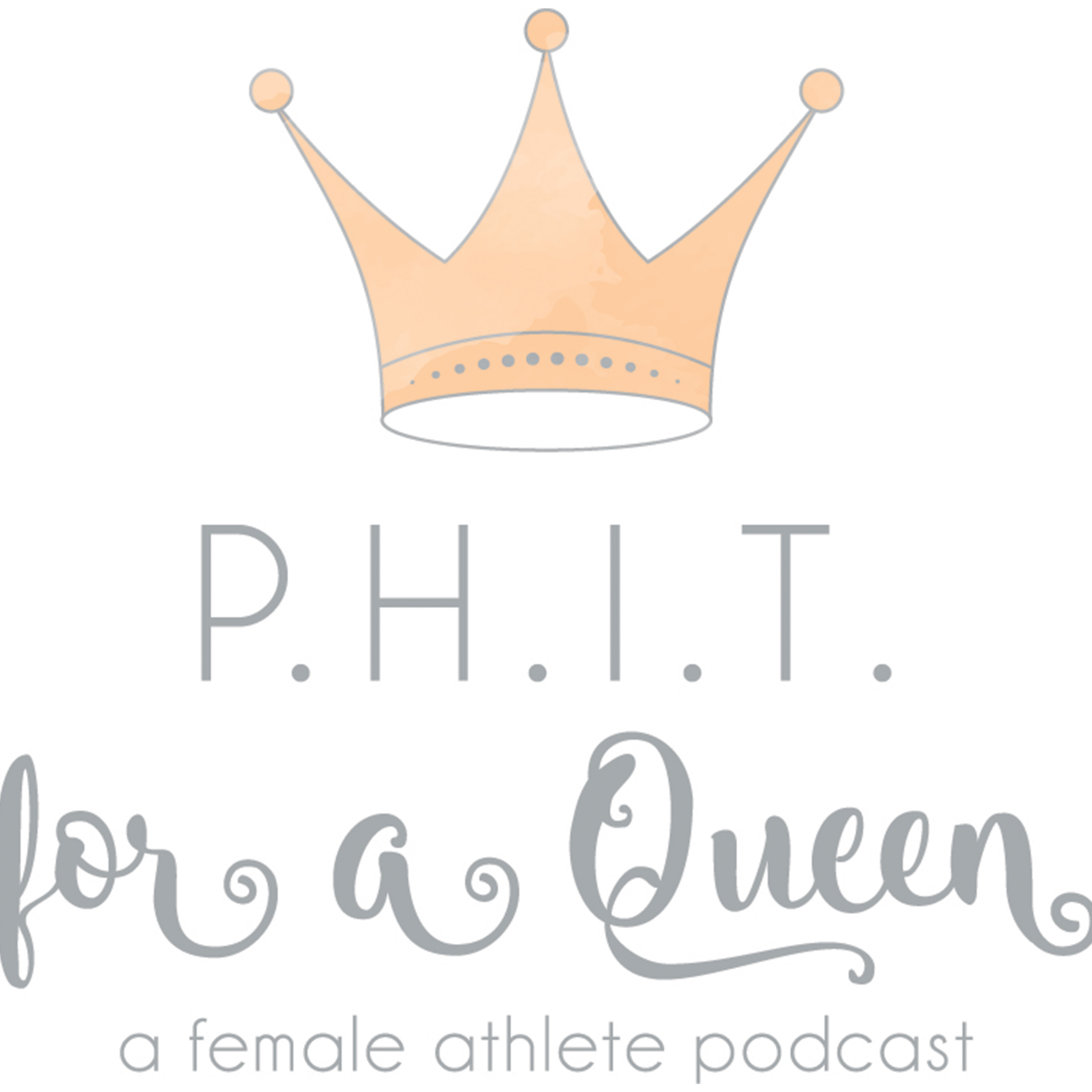Episodes

Friday May 31, 2019
Nathan Carlson from Running Mate KC shares on PHIT for a Queen
Friday May 31, 2019
Friday May 31, 2019
Nathan Carlson from Running Mate KC shares on PHIT for a Queen

- Desired to run each day faster than the other and found that his body wasn’t able to withstand the training.
- This led him to his interest in physical therapy specifically for running.
- When looking at injuries we must look at so many different variables to put them at their best place to come back to health.
- Consistency is key with injuries- training, mindfulness, progression
- There is never One workout that is the workout.
- Injuries- does it go away, or does it require an adjustment?
- Tendinopathy & bone injuries continue to be the leading injuries in female athletes
- Heavy lifting helps to make tendons thicker & bones denser.
- Lifting also helps to improve running economy.
- Ideal situation runners lift twice a week, 30 minutes
- Daily do something from the hips, knees, lift something or pull something
So you know he is legit:
Nathan Carlson received his Doctor of Physical Therapy from Rockhurst University and focuses on the management of runners and triathletes. He is a USA Track and Field Coach and combines his extensive experience working with endurance athletes to provide the most comprehensive care in the Midwest. His specific clinical interests include the management of bone stress injuries and tendon related disorders. Aside from patient care, Nathan manages multiple local runners and triathletes strength training programming. Nathan has one simple goal. Provide the highest quality injury management and training experience for endurance athletes of all levels. Lastly, Nathan helps manage Chris Johnson’s mentorship group the Runners Zone which helps coaches, clinicians, and dedicated endurance athletes refine their abilities at injury management, coaching and strength training.
Current Roles:
- Owner of Runningmate PT and Performance
- Physical Therapist for UMKC Cross Country and Track
- The host of The Runner’s Zone Podcast
- Manages The Runners Zone (mentorship group for clinicians, coaches, and dedicated endurance athletes) along with Chris Johnson and Joel Sattgast
- Nathan also enjoys running, cycling, drinking coffee and spending time with his wife and two boys.

Friday May 24, 2019
Friday May 24, 2019
Josh Wolf shares on PHIT for a Queen why “he loves coaching and how the real coaching comes when looking outside the lines”
- You have to reframe your brain, reframe your friendships
- My biggest weakness of addictive behavior became fulfilled when I became a triathlon athlete.
- You are never too old to start something you are passionate about
- Found that once you have found that feeling of understanding it couldn’t get any worse you know what is coming next.
- Found that pushing the limits helped him translate into other aspects outside of triathlons
- Found coaching was a great way to instill this in others
- The biggest thing I do as a coach is finding what they need from me and then bring that out of them- real coaching comes when looking outside the lines.
- Mindset is an opportunity and the opportunity to always shape our thoughts.
- Finding how each of his athletes needs to be talked to.

Josh Wolf is a father, successful endurance coach, speaker and 7 time USA Triathlon All American and 6-time Ironman World Championship Qualifier. He specializes in reframing mindsets allowing us to achieve what we once thought was impossible.
Where you can find more information on how to join the Wolf pack:
Josh Wolf
Head Endurance Coach
816.668.2677


Friday May 17, 2019
Friday May 17, 2019

Jon Hereth of Summit Rehab shares “Why your feet are like your car- biomechanics, capacity, and maintenance.” on PHIT for a Queen.
- The brain uses the foot to figure out where the body is in space.
- The foot is responsible for sensory input
- Biggest foot injury: plantar fasciitis, Achilles tendonitis, bunions
- The foot is prone to injury due to repetitive doing things right or poorly
- Learning biomechanics to allow your joint to handle more stress.
- Build your capacity and good position to handle the stress.
- Learn how to help your body be able to handle the stress as well.
- Toes should be the widest part of the foot. Our footwear can work against this to create short-foot.
- Foot self-care starts with getting your intrinsic muscles working, spacing the toes

Jon Hereth PTA Jon graduated from MCC-Penn Valley and became licensed as a Physical Therapist Assistant in 2009. He currently treats patients and is the assistant administrator at Summit Rehab in Lee’s Summit, MO. Professionally, Jon’s interests include sports and orthopedic physical therapy, injury prevention, chronic pain, and following a movement-based approach popularized by the works of Gray Cook, Charlie Weingroff, Dr. Vladimir Janda and Dr. Stuart McGill. As a therapist and athlete, Jon enjoys looking at the mechanics of human movement in order to help patients achieve maximum performance in their own lives. An active strength athlete and highland games competitor, Jon has become one of the “go-to” rehab specialists for strength and barbell sports across the area.

Friday May 03, 2019
Friday May 03, 2019
The healthcare system has done a disservice with the recovery of the female athlete.

Dr. Somers discusses how the gender biases of the female body, sports injury and how we recover is detrimental and harmful. She shares all that she has learned about physical therapy of the female athlete.
* Confessions of a PT: Dr. Somers shares her journey of becoming a PT, why she wanted to specialize in the female athlete and how the healthcare system has done a disservice to the recovery of the female athlete.
* Dr. Somers addresses the subtle gender biases of the biomedical model, such as the language we use to describe a woman's body, and how she came to have an injury as harmful and untrue.
* Dr. Somers believes good physical therapy means that the client is in charge of their body, and instead of listening to others saying what the right thing is, let them know that they can decide what is good for them or not. The science backs up this technique.
* We know that pain itself is not dangerous and those recovering from an injury are scared of it, understandable. The reality is pain is experienced by all human beings and instead of avoiding it how can we build the confidence of moving forward with it. The client can draw the lines of pain.
You Know She is Legit:
Dr. Ellie Somers is a physical therapist, performance coach, writer, athlete, and owner of Sisu Sports Performance & PT in Seattle, WA. She obtained her Doctor of Physical Therapy degree from Saint Louis University where she also played collegiate soccer. Ellie has been a physical therapist for 10 years and specializes in work with female athletes, with a particular focus on runners and sporting athletes. She believes in keeping athletes from becoming medicalized and actively seeks to help athletes find a plan to get them to where they want to be in a way that works for them.
How to Connect with Dr. Somers:
https://sisuperformancept.com/drelliesomers
Instagram: drelliesomers
Facebook: @sisuperformancept
Twitter: @drelliesomers
Confessions Blog Post by Dr. Ellie Somers
https://sisuperformancept.com/blog/2019/1/3/physical-therapist-confessions

